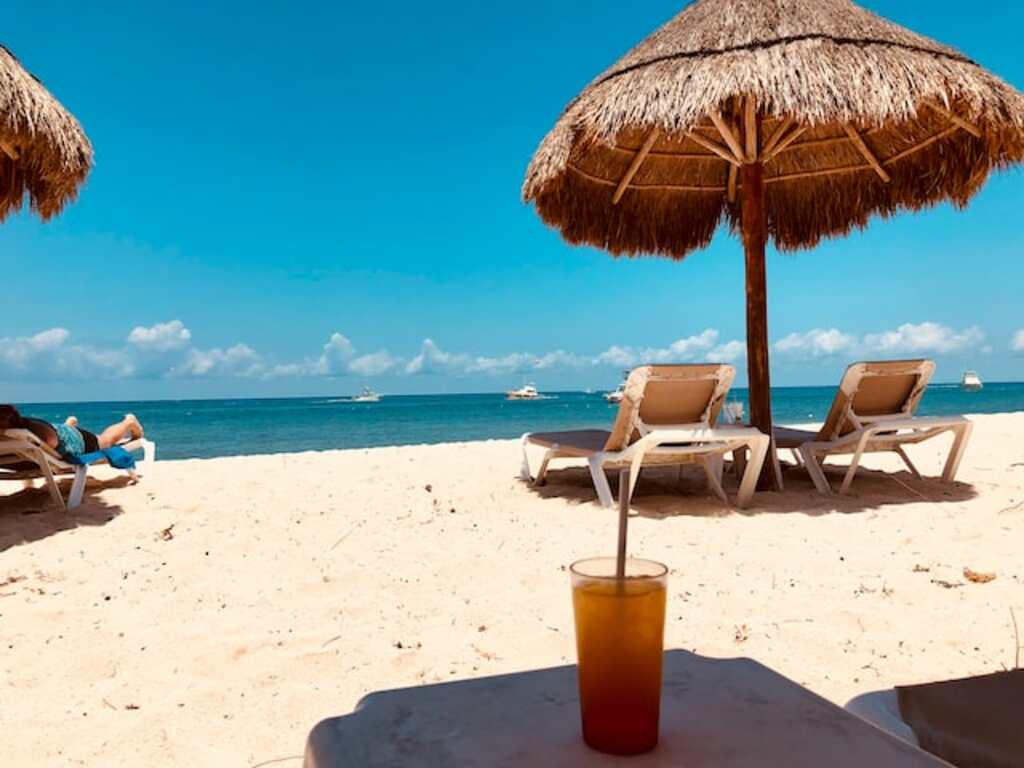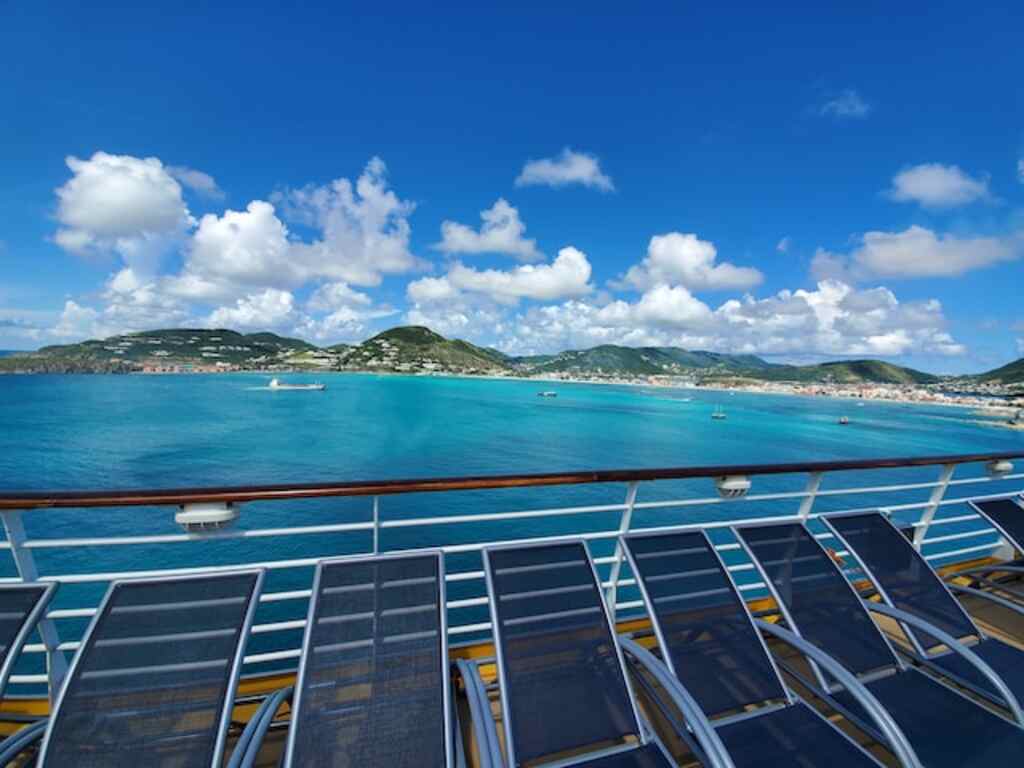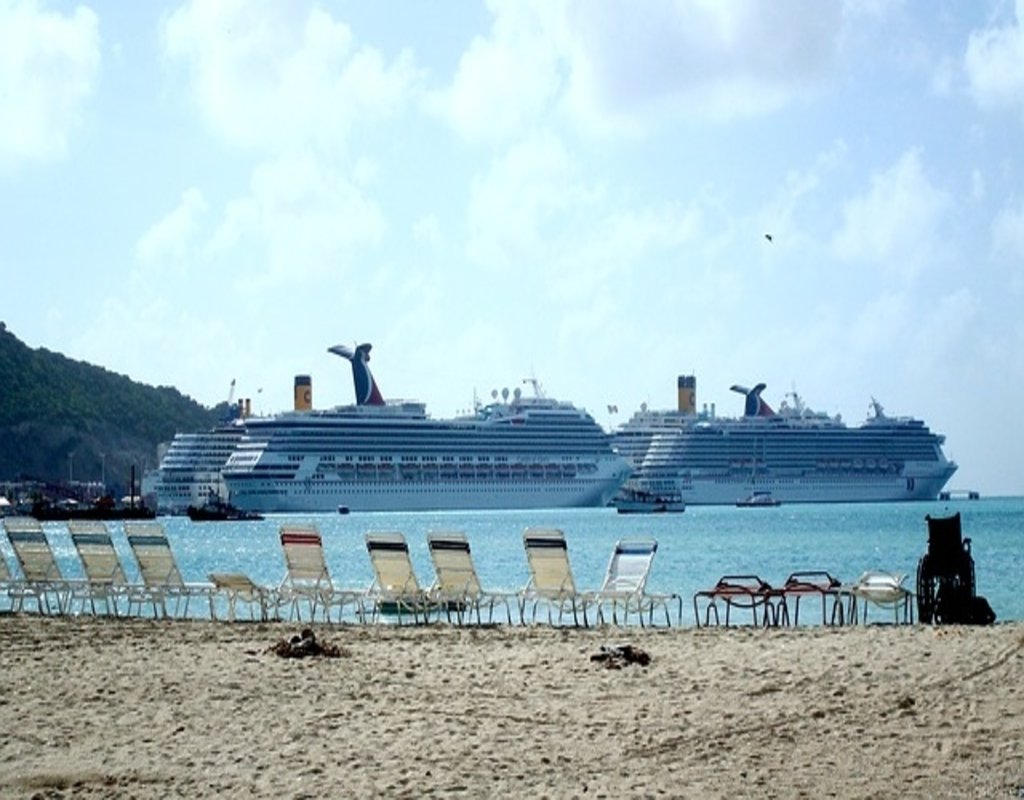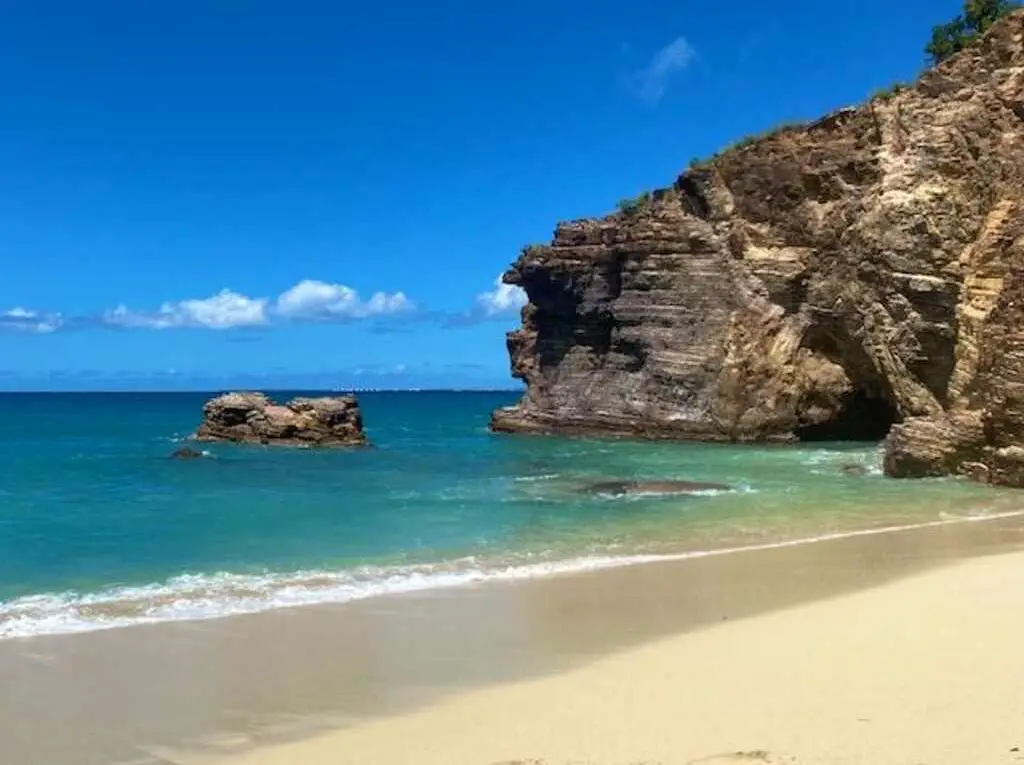Does Sint Maarten Have Earthquakes? Find Out Now!
Earthquakes can be devastating natural disasters, and if you’re planning to visit or live in Sint Maarten, it’s natural to wonder about the potential for seismic activity on the island.
In this article, we’ll explore the seismic activity in Sint Maarten, examining the geological composition of the island and looking at historical and current records of earthquake activity.
We’ll also look at the measures taken to monitor and assess earthquake risk in Sint Maarten, as well as the potential effects of earthquakes on the island and the preparedness and response efforts in place to ensure the safety of residents and visitors.
First, let’s address the question that’s likely on your mind: does Sint Maarten have earthquakes? The short answer is yes, but the level of seismic activity on the island may surprise you.
While Sint Maarten is not located on a major fault line, it is still vulnerable to earthquakes due to its proximity to the Puerto Rico Trench, a subduction zone where the North American Plate meets the Caribbean Plate.
Table of Contents
- 1 Key Takeaways
- 2 Does Sint Maarten Have Earthquakes
- 3 Understanding Sint Maarten’s Geological Composition
- 4 Historical Earthquakes in Sint Maarten
- 5 Monitoring Earthquake Activity in Sint Maarten
- 6 Frequency and Magnitude of Earthquakes in Sint Maarten
- 7 Assessing Earthquake Risk in Sint Maarten
- 8 Effects of Earthquakes on Sint Maarten
- 9 Preparedness and Response to Earthquakes in Sint Maarten
- 10 Frequently Asked Questions about Earthquakes in Sint Maarten
- 11 Conclusion
- 11.1 Does Sint Maarten have earthquakes frequently?
- 11.2 What is the biggest earthquake that has occurred in Sint Maarten?
- 11.3 Should I be worried about earthquakes if I’m planning a trip to Sint Maarten?
- 11.4 What should I do if I feel an earthquake while in Sint Maarten?
- 11.5 What measures are in place to keep residents and visitors safe in the event of an earthquake?
- 11.6 How can I learn more about earthquake preparedness in Sint Maarten?
- 12 Author
Key Takeaways
- Sint Maarten is located in an active seismic zone in the Caribbean region.
- Earthquakes in Sint Maarten are usually of low to moderate magnitude.
- The island’s geological setting makes it prone to seismic activity.
- Residents and visitors should be prepared and aware of earthquake risks.

Does Sint Maarten Have Earthquakes
Yes, Sint Maarten experiences earthquakes. As part of the Caribbean region, it lies in an active seismic zone. While earthquakes in Sint Maarten are generally of low to moderate magnitude, they can still occur.
The island’s geological setting makes it susceptible to seismic activity. Preparedness and awareness are crucial for residents and visitors to handle any potential seismic events.
Understanding Sint Maarten’s Geological Composition
Sint Maarten is a small island country in the Caribbean, located on the southern side of the Lesser Antilles. The island is part of the Leeward Islands, and it is divided into two parts, one French and the other Dutch. The country’s geology is primarily composed of volcanic and sedimentary rocks, which are common in the Caribbean.
The island’s geology is influenced by the Caribbean Plate and the North American Plate, which are two of the largest tectonic plates that make up the Earth’s crust. The interaction of these two plates creates a subduction zone, which is a region where the denser oceanic plate is forced beneath the lighter continental plate. This process leads to the formation of volcanoes and earthquakes.
| Geological Activity | Description |
|---|---|
| Volcanic Activity | The island’s volcanic activity has been dormant for many years, and there have been no reports of recent eruptions. However, scientists continue to monitor the island’s volcanic activity to ensure the safety of its residents and visitors. |
| Seismic Activity | The island experiences seismic activity due to its location on a subduction zone. This frequently results in earthquakes, which can range from minor tremors to more significant events. |
It is essential to understand the geological composition of Sint Maarten to appreciate the potential for earthquakes in the region. In the next section, we will delve into the historical record of earthquakes in Sint Maarten to assess the level of seismic hazard on the island.
Historical Earthquakes in Sint Maarten
Sint Maarten has a long history of seismic activity, with earthquakes being recorded on the island for centuries. However, the frequency and magnitude of these earthquakes have varied over time, making it difficult to predict future seismic events.
Historical records show that Sint Maarten has experienced several damaging earthquakes in the past. The most notable earthquake occurred in 1865 when a magnitude 7.5 earthquake struck the island, causing significant damage to buildings and infrastructure. Another significant earthquake occurred in 1995, with a magnitude of 5.8, causing minor damage to buildings and homes.
Despite the occurrence of damaging earthquakes, Sint Maarten has not experienced any major seismic events in recent years. However, seismic activity remains a concern on the island, and it is important to monitor earthquake activity closely and prepare for the possibility of future earthquakes.
Sint Maarten Seismic Hazard
The United States Geological Survey (USGS) has identified Sint Maarten as having a moderate seismic hazard, with a probability of experiencing a damaging earthquake within the next 50 years. The hazard is due to the island’s location near the Sint Maarten Trench, where the North American and Caribbean plates meet, leading to frequent seismic activity in the region.
While the potential for earthquakes exists in Sint Maarten, the local government has taken measures to mitigate the impact of seismic events. These measures include building codes that require structures to be earthquake-resistant and conducting regular earthquake drills and emergency preparedness exercises.
Overall, while Sint Maarten has experienced damaging earthquakes in the past and remains at risk for future seismic events, the government and local communities are taking proactive measures to ensure the safety and resilience of the island.
Monitoring Earthquake Activity in Sint Maarten
Given the potential risk of earthquakes in Sint Maarten, it is essential to have reliable systems in place for monitoring seismic activity. The country is not only part of the earthquake-prone region of the Caribbean, but it also sits on the boundary of two tectonic plates. Thus, the local authorities have invested heavily in monitoring earthquake activity throughout the island.
One critical aspect of this monitoring system is the Caribbean Tsunami Warning Program (CTWP), which is responsible for detecting and issuing warnings for tsunamis in the region. The CTWP works in conjunction with the Seismic Research Centre of the University of the West Indies, which operates a seismograph station on the island.
The seismograph station records and measures the seismic activity on the island, providing useful data for earthquake research and prediction. The recorded data is transmitted to the university’s data center and then disseminated to relevant authorities and institutions. The data is also used for hazard assessments, which are crucial for ensuring that the island is well-prepared for any potential earthquake events.
Earthquake Early Warning System
Sint Maarten also operates an earthquake early warning system called the Caribbean Early Warning System (CEWS). CEWS is a sophisticated system that uses sensors networked throughout the region to detect earthquakes. The system can provide alerts to the authorities and the public within seconds after a seismic event occurs, giving people valuable time to prepare.
Additionally, the system can automatically trigger a series of actions, such as shutting down gas lines and power grids, to prevent further damage. The system also includes a public alert system that disseminates information via social media, radio, and television.
In summary, Sint Maarten has a comprehensive and advanced earthquake monitoring system in place that allows it to detect and respond to any potential seismic events that could occur on the island.
Frequency and Magnitude of Earthquakes in Sint Maarten
Sint Maarten is situated in a seismically active region. Over the years, the island has experienced numerous earthquakes, both small and large in magnitude.
According to the Seismic Research Unit of the University of the West Indies, Sint Maarten has recorded at least 20 earthquakes with a magnitude of 3.0 or higher in the past decade. These earthquakes have ranged in magnitude from 3.1 to 5.2 on the Richter scale.
While these earthquakes are generally considered to be moderate, they can still cause damage to buildings and infrastructure, especially if they occur in densely populated areas.
Recent Earthquakes in Sint Maarten
One of the most significant earthquakes to hit Sint Maarten in recent years occurred on November 12, 2017. The earthquake, with a magnitude of 5.2, was centered approximately 50 miles east-northeast of the island.
The earthquake was felt throughout Sint Maarten and neighboring islands, including Anguilla, St. Barths, and St. Kitts and Nevis. There were no reports of significant damage or injuries.
Another noteworthy earthquake occurred on January 28, 2021, with a magnitude of 3.3. The earthquake was reportedly felt by residents in various parts of the island, but there were no reports of damage or injuries.
Earthquake Frequency in Sint Maarten
The frequency of earthquakes in Sint Maarten varies from year to year. While the island does experience seismic activity on a regular basis, the frequency of earthquakes with a magnitude above 3.0 is relatively low.
According to the USGS (United States Geological Survey), there is roughly a 1 in 1,000 chance of an earthquake of magnitude 6.0 or greater occurring in Sint Maarten every year. However, it’s important to note that earthquakes are unpredictable and can occur at any time.
Despite the relatively low frequency of earthquakes, it’s crucial that residents and visitors alike remain aware of the potential seismic hazards and take necessary precautions to stay safe.

Assessing Earthquake Risk in Sint Maarten
Given Sint Maarten’s location in a seismically active region, it is vulnerable to earthquakes. The island is located near the boundary of the North American and Caribbean plates, which are responsible for the earthquakes in the region.
Authorities in Sint Maarten have taken steps to assess and manage the earthquake risk on the island. The government has established a National Disaster Management Organization (NDMO), which is responsible for developing and implementing plans to reduce the impact of natural disasters such as earthquakes.
Measuring Earthquake Risk
The NDMO works closely with the Seismic Research Center (SRC) of the University of the West Indies, which monitors seismic activity in the region and provides timely information on earthquakes and other hazards. The SRC operates a network of seismic monitoring stations that record seismic events.
The SRC also uses historical earthquake data to assess the earthquake risk to Sint Maarten. The organization has developed hazard maps that show the likelihood of different levels of ground shaking in different parts of the island. The maps are used to inform building codes and other policies designed to reduce the risk of earthquake-related damage.
Building Standards
One of the key ways to mitigate earthquake risk is to ensure that buildings are constructed to withstand seismic forces. The government of Sint Maarten has established building standards that take into account the earthquake hazard and require new buildings to be constructed to withstand seismic forces.
Building codes require that structures be designed to withstand a certain level of ground shaking, as measured by the earthquake hazard maps. The codes also require that structures be constructed with materials and techniques that can withstand the forces of an earthquake, such as reinforced concrete and steel.
Emergency Response and Recovery
In the event of an earthquake, the NDMO has plans in place to respond quickly and effectively. The organization works with other agencies and organizations on the island to coordinate emergency response and recovery efforts.
The NDMO also works to raise public awareness about earthquake risk and preparedness. The organization provides information about earthquake safety and preparedness, including what to do during an earthquake and how to prepare an emergency kit.
By assessing the earthquake risk in Sint Maarten, establishing building standards, and developing emergency plans, authorities in Sint Maarten are working to reduce the impact of earthquakes on the island and ensure the safety and resilience of its residents and visitors.
Effects of Earthquakes on Sint Maarten
Earthquakes can have significant effects on Sint Maarten, impacting its infrastructure, economy, and community. The severity of these effects depends on several factors, including the magnitude and duration of the earthquake, as well as the building codes and preparedness measures in place.
Buildings and other structures can sustain damage during earthquakes, leading to disruptions in key services such as power, water, and transportation. This damage can also result in economic losses, affecting businesses and employment opportunities in the affected areas.
Furthermore, earthquakes can have profound social and psychological effects on communities and individuals, leading to feelings of anxiety and fear. This can be particularly true for those who have experienced previous earthquakes or who live in areas with a high risk of seismic activity.
“The 2010 M7 earthquake in Haiti had devastating effects, causing significant loss of life and damage to infrastructure. As a result, it’s crucial for Sint Maarten to remain vigilant and prepared for any potential earthquakes.”
Despite the potential for significant harm, Sint Maarten has developed plans and procedures for managing and mitigating the impact of earthquakes. By prioritizing prevention, preparedness, and response efforts, the island can continue to thrive while minimizing the effects of seismic activity.

Preparedness and Response to Earthquakes in Sint Maarten
Sint Maarten takes the threat of earthquakes seriously and has implemented measures to mitigate their impact. These efforts include:
| Measure | Description |
|---|---|
| Building codes | Strict building codes are enforced to ensure that structures can withstand seismic activity. |
| Emergency response plans | Sint Maarten has established emergency response plans that include evacuation procedures and coordination with neighboring islands. |
| Public education | The government provides public education on earthquake safety and preparedness through various channels. |
In the event of an earthquake, Sint Maarten has an emergency management team that coordinates response efforts. The team includes representatives from various agencies, such as the police, fire department, and medical services.
The island also has designated shelters, including schools and community centers, where residents and visitors can seek refuge in the event of an earthquake. These shelters are equipped with emergency supplies, such as food, water, and medical kits.
Earthquake Drills
To ensure that residents and visitors are prepared for earthquakes, Sint Maarten conducts regular earthquake drills. These drills simulate an earthquake scenario, allowing people to practice their response in a safe environment.
The drills are conducted in schools, businesses, and other public places. They are an important part of the island’s preparedness efforts, as they help to ensure that people know what to do in the event of an earthquake.
Post-Earthquake Response
After an earthquake, Sint Maarten’s emergency management team assesses the damage and coordinates response efforts. Hospitals and medical facilities are prepared to handle an influx of patients, and local authorities work to restore essential services, such as electricity and water.
The government also works with international aid organizations to provide assistance, if needed.
Overall, Sint Maarten takes a comprehensive approach to earthquake preparedness and response, working to ensure the safety and resilience of the island and its residents and visitors.
Frequently Asked Questions about Earthquakes in Sint Maarten
Earthquakes can be a concerning topic, especially for those living or visiting areas that experience seismic activity. Here are some commonly asked questions about earthquakes in Sint Maarten, along with helpful answers and information.

Conclusion
Despite its beautiful surroundings, Sint Maarten is not immune to seismic activity. As part of an active seismic zone, the island experiences earthquakes, though generally not of high magnitude.
Being prepared and informed about earthquake risks is essential for both residents and visitors to ensure their safety and well-being in the event of any seismic occurrences.
Does Sint Maarten have earthquakes frequently?
A: Sint Maarten experiences seismic activity, but it is not a common occurrence. The island is located in an area of low to moderate seismic hazard, with rare occurrences of earthquakes being felt.
What is the biggest earthquake that has occurred in Sint Maarten?
A: There have been no major earthquakes recorded in Sint Maarten, with the largest earthquake in recent history being a magnitude 5.2 event that struck in 2015.
Should I be worried about earthquakes if I’m planning a trip to Sint Maarten?
A: Earthquakes are a natural occurrence that can happen anywhere in the world. While there is a low risk of seismic activity in Sint Maarten, it’s always a good idea to be prepared and informed. Knowing what to do in the event of an earthquake can help ensure your safety.
What should I do if I feel an earthquake while in Sint Maarten?
A: If you feel an earthquake while in Sint Maarten, stay calm and seek shelter in a sturdy building. Avoid standing near windows or objects that could fall and cause injury. Be aware that aftershocks may occur and be prepared to take further action if necessary.
What measures are in place to keep residents and visitors safe in the event of an earthquake?
A: Sint Maarten has a comprehensive emergency management system in place that includes preparedness and response plans for earthquakes. The island also participates in regional and international initiatives to enhance earthquake monitoring, risk reduction, and emergency response efforts.
How can I learn more about earthquake preparedness in Sint Maarten?
A: There are several resources available for learning more about earthquake preparedness in Sint Maarten, including the Emergency Operations Center and the Disaster Management Committee. Additionally, the United States Geological Survey provides helpful information and resources for earthquake preparedness worldwide.




